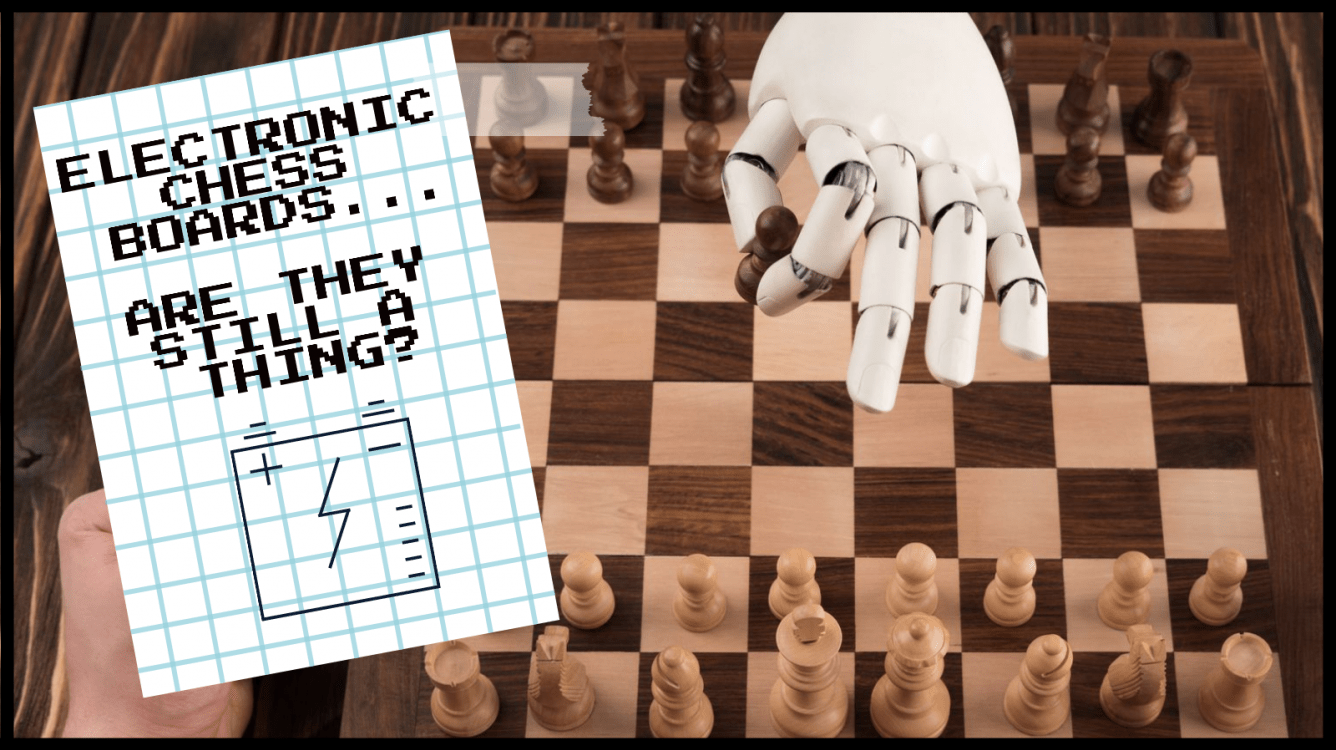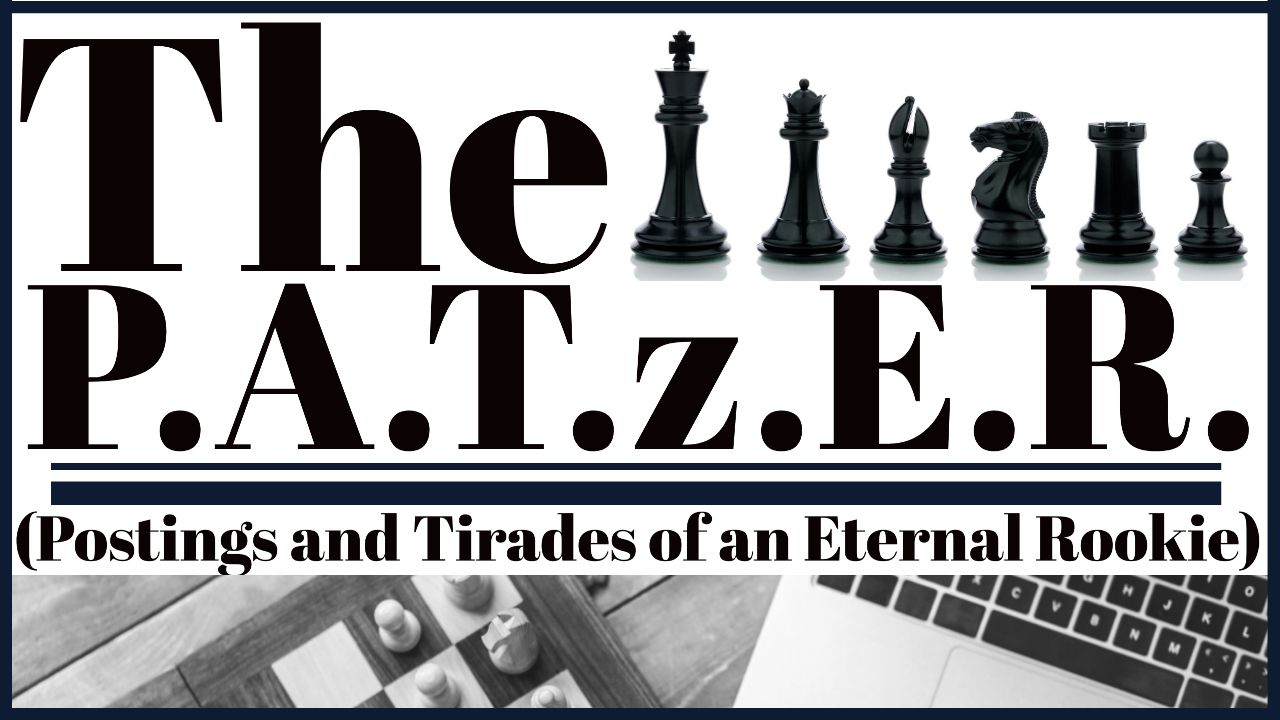
My journey with chess computers.
If you grew up in the 70s and 80s, it meant that you got to play with some pretty cutting edge technology of the time. We saw our first personal computers during this timeframe and, most exciting for us patzers, our first real chess computers.
Growing up, I played chess quite a bit. But since none of my friends or family played, I was playing against computers and online through electronic bulletin board systems (the predecessor to the internet).
Of course, I dreamed of having a super cool chess computer, but they were too expensive for a kid. And why would you spend that much on a chess computer when you can play chess (and do other things) on your own personal computer?
So I didn't get my first real chess computer until I was in college in the 90s. My first machine was the Saitek Kasparov:

I played hundreds and hundreds of games on this board. I was never a particularly strong player, so I never had a problem finding a level that was challenging enough.
I loved this board. I remember it had a compartment on the underside where you could store your pieces. So this made it wonderfully portable!
But it wasn't portable enough to carry in my backpack around campus... So that's when I bought the Saitek Pcoekt Chess electronic board:

This model was fantastic. I carried it everywhere. And again, being a patzer, I had no problems finding it a challenge.
For the next 20 years, I played chess off and on, but without serious regularity. I would still use my Saitek Kasparov Sensor Chess electronic board on occasion but was more likely to play online somewhere.
Around 2017, I decided to pick up a new electronic chessboard. I didn't want to spend a lot of money on it, so I capped my budget under $200. Turns out, I never got anywhere NEAR $200!! I ended up buying the Pavilion Chessman Pro II for a whopping $40 on Amazon:

It was okay for the price. I mean, $40, right? I think originally these were going for just under $200.
The main downside of this model is that the pieces are INCREDIBLY small. The squares are MAYBE 1 inch (if that). The pieces are also hollow, so a brisk exhale is enough to knock them over. So I immediately replaced them with classic Staunton pieces from a mini-board that I got on Amazon for $9. This made a substantial improvement in the quality and feel of the pieces.
With 64 different levels, again it was more than a challenge for a patzer like me.
It was fun, but the really small pieces were really annoying me. So a few months ago I decided to upgrade... Meet, the DGT Centaur!

So my first impressions of the DGT Centaur were very, very positive. What I really liked about it:
- The size! This was such an upgrade from my prior set! The board size was good at a nice 17.5 x 15.8" with squares at 1.9." The King was decent at 3 3/8”. I was afraid the pieces would be too light. Thankfully they were not.
- The LED lighting! I found the lighting very aesthetically pleasing. I enjoy it more than the flashing red LEDs on other boards. Of all the lighting styles I've seen, this one is my favorite:

- It is rechargeable! You can take this board anywhere. You can play outside and have a good experience. Your pieces won't blow away like smaller boards.
So I kept this board for a couple of weeks, but ultimately it wasn't what I was looking for. Here's what I felt it was lacking:
-
First, you cannot set a level or ELO rating for the computer. The Centaur's strength is adaptable. So it learns your level and plays around that level and, supposedly, gives you a chance to win every game. This is okay in theory, but this is the only way this board operates. So if you have two people playing and they are different levels, only one person will be having a positive experience.
-
Also, I didn't love the board color. That squares, as you can see, are white and medium gray. It isn't a dealbreaker, but I didn't love having bright-white pieces and bright-white squares. I like a little more visual distinction between the pieces and squares. Supposedly you can replace the pieces and there are instructions online on how to do it. I tried, but it didn't work for me. But it is possible; there are plenty of people out there who have done it.
-
You can't connect it to a computer. I knew this going into the purchase, though. But since you can't change the level and you can't connect it to anything else, it really limited its usefulness for me.
-
The price. At about $400, I just felt like I was getting too many limitations.
So overall, I liked the Centaur. I just didn't love it. So I packed it up in its original packing and sold it on eBay.
I then went online and bought my current electronic chessboard. The Millenium ChessGenius Exclusive!

Thus far I am profoundly happy with my Millenium. This board has so many features above and beyond the boards I've used in the past. So much so, I am going to write a dedicated blog post about this board and what I've managed to do with it.
Is it perfect for me? No. But is 4 out of 5 stars for me. I'll explain more in my next posting.
Some readers are probably wondering why I didn't consider the DGT Smartboard. Well... I did. I like it. However, as much as I like the DGT boards I really want my board to have LED lights. I really just want to focus on the board while listening to jazz, and not have to listen for moves to be read out to me by the software.
The other high-end DGT boards look great too. But, still... no lights (I know, The Revelation II has lights, but $3,000 is a bit extreme for my budget). And they are just too expensive for a patzer like me at this time. No disrespect to DGT boards. I know they rule this market, and probably deserve to. But I wasn't willing to compromise on the lights.
I hope you have enjoyed my jaunt through my personal history with electronic chessboards. Be sure to catch my next posting which will be all about the Millenium and what I am doing with it!
What experience do you have with electronic chess boards? Share in the comments below!
